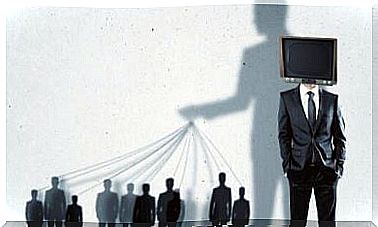Anterograde Amnesia: The Inability To Learn New Data

Knowing a phone number by heart, recognizing someone you know on the street and knowing their name. Remembering where you went on vacation last summer. All these functions are part of a fundamental but very important psychological process: memory. But if you can no longer remember events from the past or you are unable to learn new data, your memory may be damaged. You may even have anterograde amnesia.
Today, the role of memory is so valued because it saves a lot of time when it works properly. Because people with a “good memory” can solve problems faster if they have already solved them before. After all, they have already gone through the process they would need to find a solution.
We can say the same about swimming, fast typing and cycling. Once you’ve learned how to do it, don’t forget it, even if you haven’t done it for a long time. Those activities can get a little awkward when you’re out of shape. But you will soon be back on the same level as you were before.
From this point of view, it appears that human memory is responsible for a wide range of functions. But it doesn’t always work at the level we would like. Certain memory problems, such as forgetting where your keys are, are not really serious. But at other times it can be more worrisome, such as when you can’t remember what you were talking about.
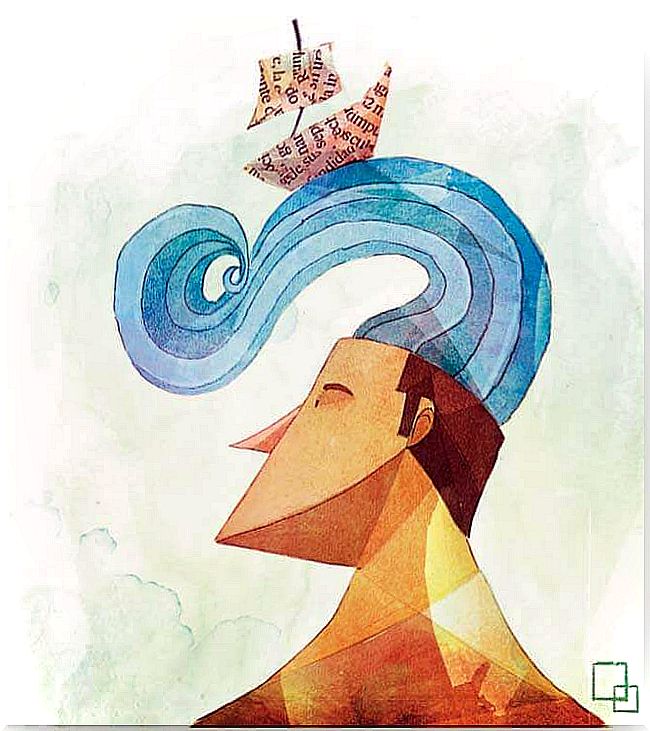
What can memory do?
Memory allows us to learn, organize and retain information and events from the past. It is closely related to attention, which is yet another fundamental psychological process. The process consists of three stages: encoding, saving, recalling. Amnesia disrupts memory.
We can think of memory as a psychological process where we encode the data. And then store them in the brain and recall them when we need them. The most important part is that we can recall the information we learn. Even when it’s not right in front of us. Sometimes we can recall things quickly and accurately. But at other times this can be more difficult.
Studies have been conducted in the field of cognitive psychology and cognitive neuroscience. They show that the brain has multiple memory systems. In turn, each of these systems has its own characteristics, functions and processes.
The inability to recall memories or learn new things
Amnesia is diagnosed when the person has severe memory problems. Examples include an inability to store new information or recall data that was previously stored.
Biological amnesia is the result of physical brain damage. It can be caused by illness, injury or even substance use. Dissociative amnesia is a result of psychological factors, such as suppression and other defense mechanisms.
In addition, there are also known cases of spontaneous amnesia, such as transient general amnesia. This form of amnesia is a sudden loss of memory for no apparent reason. It is more common in older men and usually lasts less than 20 hours.
We can also classify amnesia according to the kinds of memories that the person cannot recall or form. Anterograde amnesia is the inability to form new memories. Retrograde amnesia is the inability to recall past memories that a person could usually recall.
People with anterograde amnesia can remember things from their childhood. But they cannot learn or remember things that happened after the onset of the injury that caused the amnesia.
Korsakoff’s Syndrome
The most common type of biological amnesia is Korsakoff’s syndrome. The cause is a deficiency of thiamine in the brain. Usually this is a result of chronic alcoholism. The name of this syndrome comes from Sergei Korsakoff, the man who discovered it.
The hallmark of Korsakoff’s syndrome is an acute state of mental confusion and disorientation in time and space. When it is chronic, the confused state will last longer.
Often the onset of Korsakoff’s syndrome follows an acute episode of Wernicke’s disease. Or Wernicke’s encephalopathy. When both conditions occur together, it is called Wernicke-Korsakoff syndrome.
These are the main symptoms of Wernicke-Korsakoff syndrome:
- ataxia (lack of coordination)
- ophthalmoplegia (paralysis of the eye muscles)
- polyneuropathy (pain and weakness in the same areas on both sides of the body)
People with Wernicke-Korsakoff syndrome also suffer from:
- disorientation in time, space and person
- the inability to recognize relatives
- apathy
- attention problems
- not being able to have a coherent conversation
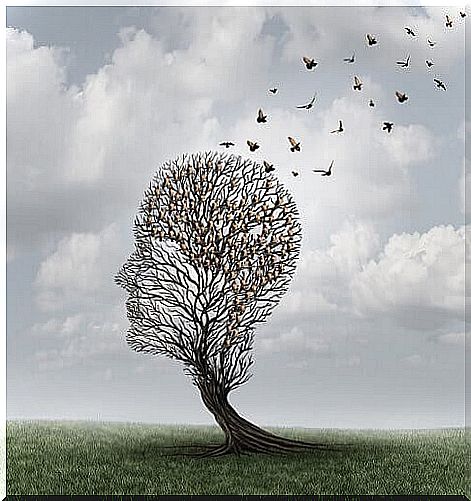
Retrograde amnesia: forgetting the past
A fall, accident or electric shock can cause serious brain injury. This can cause retrograde amnesia. Retrograde amnesia is defined as the inability to remember past events. In many cases the amnesia disappears. Gradually, the person’s memory recovers. In the best cases, it comes back in full.
Retrograde amnesia usually “erases” the memories just minutes before the injury. If the blow is very severe, it can affect the memories of months or even years before.
Anterograde amnesia: living without a future
Some injuries cause a general and permanent memory abnormality. Without any other decline in intellectual capacity. In these cases, the person has no problems with language, perception or attention. In addition, they retain the skills they had before the injury.
People with anterograde amnesia have an incredibly difficult time retaining new information. But they can carry on a conversation. Their operational memory works normally. But minutes later, they can’t remember what just happened.
For this reason, people with anterograde amnesia cannot learn new things (or have a very hard time doing so). Sometimes they can’t even remember data from the past. It’s like living continuously in the present. The past is almost non-existent. They also cannot make plans for the future, because they will forget it.
The regions of the brain associated with anterograde amnesia
One of the main challenges of modern neuroscience is identifying which areas of the brain play a role in anterograde amnesia. In general, they believe that the brain damage that causes this form of amnesia occurs in the hippocampus and the medial temporal lobe of the brain.
The hippocampus
These brain areas act as a passageway where events and facts are temporarily stored. Until they can be stored more permanently in the frontal lobe of the brain. You can think of the hippocampus as a storage space for short-term memory.
If the memory cannot store the information properly, then it will be impossible for the information to reach the frontal lobe of the brain. This means that the brain cannot form long-term memories. In the cases of partial amnesia, memories can form but contain very little real detail.
The basal forebrain
It may seem that the hippocampus is the main brain region involved in anterograde amnesia. But recent studies suggest that other brain structures also play a role. Because it turns out that especially damage to the basal forebrain can disrupt the process of forming memories.
This zone is responsible for the production of acetylcholine. This is a very important substance for the functioning of the memory. Because acetylcholine initiates and regulates the process involved. An aneurysm is the type of brain damage to the basal forebrain that most commonly occurs. It is often also linked to anterograde amnesia.
The midbrain
Finally, the link between amnesia and Korsakoff’s syndrome has pointed to a third brain region that may play a role in the development of anterograde amnesia. The diencephalon (the midbrain) is an area that suffers from the damage caused by Korsakoff’s syndrome. Recently, researchers have begun investigating the involvement of the midbrain in amnesia.
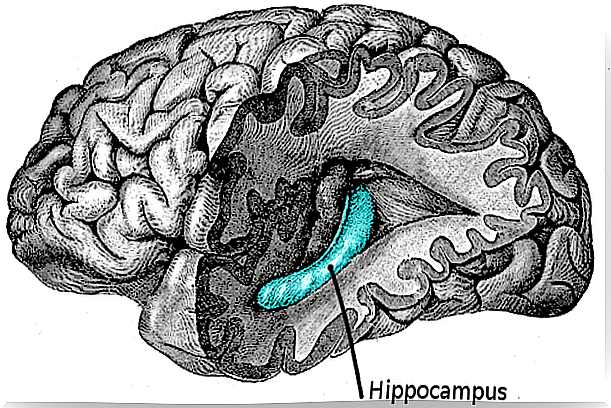
Signs of anterograde amnesia
The most obvious sign of anterograde amnesia is a low score on traditional memory and recognition tests. Minutes after someone presents them with a list of 15 to 20 words, people with this problem can only remember a few of these words.
In addition, most forgotten words are at the beginning or in the middle of the list. But they can also remember some words from the end of the list at an almost normal level. The same thing happens with conversations, movies and television series. Daily activities become difficult. Because they forget where they left things, what they did or saw.
So this can cause problems to live with other people. Because they have a hard time sustaining a conversation. Or to remember what they talked to someone about in past situations. They give the impression that they are not really present in the present.
They talk about people and events from the past just as if they are happening now. Moreover, they cannot make plans for the future. Because they don’t even know what they’re going to do tomorrow. Perhaps that is why they lack the warmth or intimacy that people normally display when speaking of past memories and their hopes for the future.
The effect on their daily life
At the same time, their memory problems can obviously cause huge problems in their daily lives. They may need ongoing care and supervision at home. Because they can’t remember certain things like taking their medication. They also fail to successfully do multi-step things.
But they can learn other things, such as walking short distances, for example from their home to a store. They seem to retain much of their knowledge, as do people with retrograde amnesia.
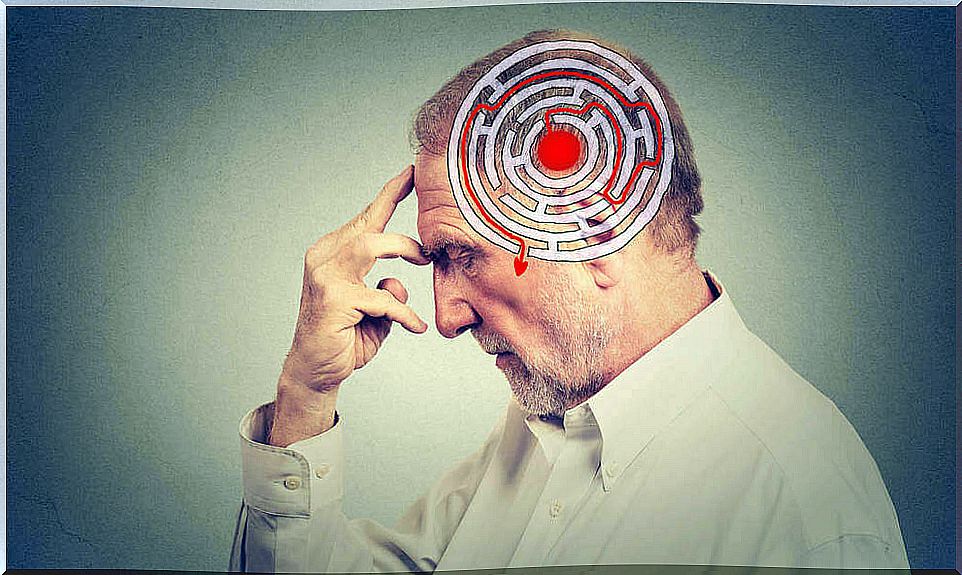
Can people with anterograde amnesia learn new things?
Gabrieli, Cohen and Corkin (1983) tried to answer this question with their patient HM. They asked him to describe words and phrases that people only started using when he already had amnesia. He didn’t get many results. But he did know what rock and roll was. They also tried to teach him the meaning of unknown words. Despite the lengthy training, all he could do was add the words to their definitions.
There have been other cases. A 10-year-old boy with severe anterograde amnesia due to anoxia (lack of oxygen) was unable to improve his reading level after the event. He also performed very poorly on several semantic memory tests. But he was able to learn computer games as quickly as his peers (Wood, Ebert and Kinsbourne 1982).
How can we explain the conservation of certain functions?
Some theories propose the idea of more memory systems. The one system responsible for normal functioning during certain tests may remain intact in amnesia. But other systems will suffer. That is why performance on different tests varies compared to how the general population performs.
The distinction between episodic and semantic memory (Tulving 1972) has led some authors to argue that semantic memory functions normally in amnesia. This would explain why some linguistic features remain intact. The damage to episodic memory would explain the failure of the functions to recall and recognize information.
People with amnesia appear to have an unaffected linguistic function. They also perform well on past knowledge tests. This means that very early in life people learn all the concepts and rules they need to successfully complete these tests.
Conclusion
Aside from theories about how people develop amnesia, the main thing to remember from this is that anterograde amnesia is a selective amnesia due to brain damage. The main problem for these people is that they have an extremely difficult time storing new information. They cannot remember new things and have problems with learning.
But anterograde amnesia does not affect the memory of past data. Any information that was stored before the damage occurred is okay. The person can remember this data without any problem. But it is also important to remember that the characteristics differ from case to case.
References:
Belloch, A., Sandin, B. and Ramos, F. (Eds.) (1995). Handbook in Psychopathology (2 vols.). Madrid: McGraw Hill.
Freedman, AM, Kaplan, HI and Sadock, BJ (Eds.) (1983). Treatise on Psychiatry (2 vols.). Barcelona: Salvat. (Orig.: 1980).




